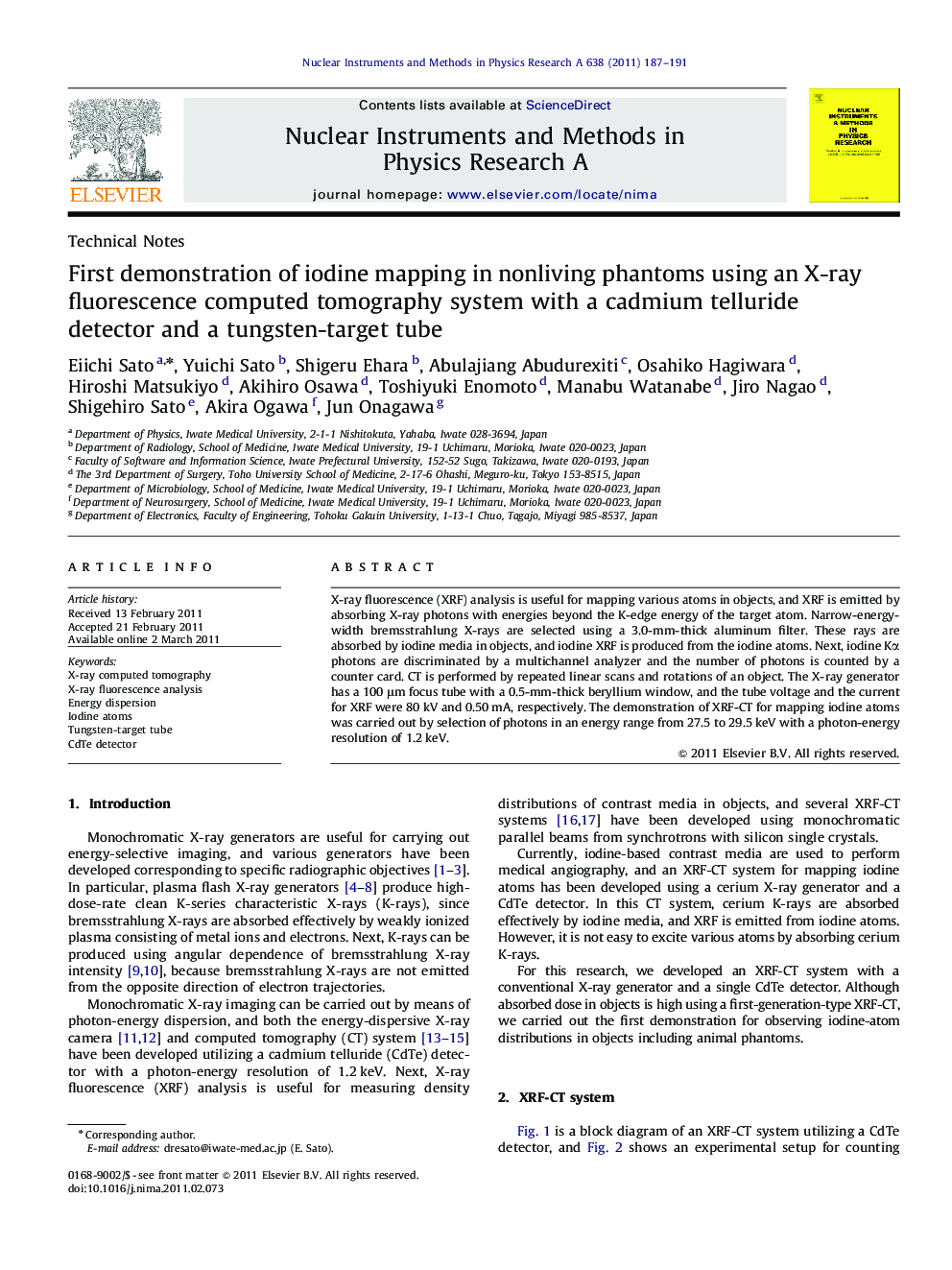| Article ID | Journal | Published Year | Pages | File Type |
|---|---|---|---|---|
| 1825343 | Nuclear Instruments and Methods in Physics Research Section A: Accelerators, Spectrometers, Detectors and Associated Equipment | 2011 | 5 Pages |
X-ray fluorescence (XRF) analysis is useful for mapping various atoms in objects, and XRF is emitted by absorbing X-ray photons with energies beyond the K-edge energy of the target atom. Narrow-energy-width bremsstrahlung X-rays are selected using a 3.0-mm-thick aluminum filter. These rays are absorbed by iodine media in objects, and iodine XRF is produced from the iodine atoms. Next, iodine Kα photons are discriminated by a multichannel analyzer and the number of photons is counted by a counter card. CT is performed by repeated linear scans and rotations of an object. The X-ray generator has a 100 μm focus tube with a 0.5-mm-thick beryllium window, and the tube voltage and the current for XRF were 80 kV and 0.50 mA, respectively. The demonstration of XRF-CT for mapping iodine atoms was carried out by selection of photons in an energy range from 27.5 to 29.5 keV with a photon-energy resolution of 1.2 keV.
